Apr 09, 2025
Author:Lisa Martinez
As cat owners learned more about what their cats needed to stay healthy, they started arguing about Fresh vs processed cat food and which is better. To be healthy, cats should eat meat, so their diet has to be high in animal nutrients. Choosing the right pet food for your cat could be challenging with all the options. Fresh foods can be eaten, including raw, cooked, processed, and prepared meals.
People often praise prepared pet diets like rice and canned meals for their natural ingredients and health benefits. These diets are inexpensive, easy to use, and durable.
However, how can you select the best one for your cat when both options have benefits and drawbacks? Stay with us as we do a detailed Cat food comparison and explain the advantages and disadvantages of fresh and processed pet food so you can decide sensibly based on your cat's health needs and lifestyle.
Fresh cat food is usually made of natural components free of extra chemicals or preservatives. This includes freshly made professional pet food, home-cooked meals, and raw diets. Many cat owners believe fresh food is the best cat food since it resembles what cats consume in the wild.
Often, cats like fresh food. It tastes a lot like what they would consume in the wild, which consists of mice, birds, and other tiny animals high in protein and water. Proponents of fresh food claim it is particularly beneficial for cats' skin, hair, and digestive health.
1. Greater Nutritional Value: Fresh food provides the required nutrients in its purest form by retaining more natural vitamins, minerals, and enzymes. Usually less processed than its commercial counterparts, fresh food can help cats live longer and be more generally healthy.
2. Better Digestion: Cats often digest fresh food more rapidly, reducing the possibility of gastrointestinal disorders, including vomiting, diarrhea, and constipation. Thus, enhancing nutritional absorption makes the dish more palatable and digestible, free of chemicals or artificial preservatives.
3. No Artificial Additives: Many processed meals contain preservatives, colorings, and flavorings that could cause long-term health issues. Raw food for cats is preferable as it has no artificial additives.
4. Improved Hydration: Fresh food, especially raw diets, offers more moisture, which helps cats with urinary tract and kidney problems. Cats don't naturally crave thirst, so providing them with high-moisture food helps prevent dehydration, a common cause of kidney impairment in cats.
5. Better Skin and Shinier Coat: A balanced, healthy cat diet’s natural fatty acids can enhance coat shine and promote skin health. Many fresh pet food options include salmon and other oils, promoting a glossy, healthy coat.
1. Issues with Storage and Handling: Fresh food requires appropriate handling and refrigeration to avoid bacterial contamination. Pet owners without information on how to preserve raw food or who lack time to ensure the food stays appropriately preserved may find this problematic.
2. Possible Nutritional Imbalances: Poor design by a veterinary nutritionist could leave homemade meals without the necessary nutrients. A poorly balanced homemade diet could cause shortages or imbalances in essential nutrients, aggravating health problems.
3. More significant Expense: Whether store-bought or made, fresh or raw food for cats is usually more costly than processed substitutes. Many pet owners may find fresh food more costly due to components like high-quality meat and veggies and the absence of preservatives.
4. Preparation Taking: Preparing fresh meals requires much more time and work than scooping industrial food from a bag. This may be challenging for busy pet owners who lack the time or energy to make their cat's food from scratch daily.
Processed pet food consists of kibble, canned food, and semi-moist food. Usually mass-produced, these products are processed in various ways to ensure cost, simplicity, and lifespan. In the cat food comparison, many pet owners prefer bagged food for convenience; this decision has obvious benefits and drawbacks.
1. Comfort: Busy pet owners may find processed pet food the best cat food option as it is simple to store, serve, and measure. Many processed foods come in portioned amounts that make feeding easier; there's no need to bother about freezing, preparing, or storing fresh food.
2. Nutritionally Balanced: Many famous companies prepare meals to fit AAFCO (Association of American Feed Control Officials) criteria. Though some companies might not follow these rules as strictly, they claim that processed foods offer the required ingredients for a cat's general well-being.
3. Extended Shelf Life: Unlike fresh food, Processed pet food doesn't need refrigeration and lasts for months without decay. Processed food is more often utilized for various reasons, including this longer shelf life, particularly for pet owners who travel often or have limited storage capacity.
4. Less Expensive: Commercial food—especially dry kibble—is more affordable than fresh food substitutes. For cat owners who have to control their money tightly yet want enough nourishment for their pets, packaged food is, therefore, instead appealing in the cat food comparison.
1. Reduced Nutrient Bioavailability: Kibble manufacturing's high-heat procedure could eliminate several necessary minerals, including vitamins and amino acids. Although several producers include artificial nutrients to offset the mix, their bioavailability is not as high as that of a typical healthy cat diet.
2. Synthetic Additives: Many store pet diets have chemicals, synthetic hues, and substances that endanger long-term health. Over time, these substances could be harmful and cause cat allergies, skin disorders, and gastrointestinal problems.
3. Reduced Moisture Content: Kibble has a low moisture content, which can cause dehydration and renal issues in cats. This is especially worrisome for cats susceptible to urinary tract infections or renal disease.
4. Possible Fillers and Allergens: Some companies utilize cheap components, such as maize, wheat, and soy, that can trigger allergies or gastrointestinal problems in delicate felines. Often included to reduce production expenses, these fillers have no nutritional benefit.
|
Factor |
Fresh Pet Food |
Processed Pet Food |
|
Nutrient Quality |
Higher due to minimal processing |
May lose nutrients due to heat processing |
|
Digestibility |
Easier to digest |
May contain fillers that are harder to digest |
|
Moisture Content |
High, promotes hydration |
Low, may contribute to dehydration |
|
Convenience |
Requires preparation & refrigeration |
Ready to serve, easy to store |
|
Shelf Life |
Short, requires careful storage |
Long, does not require refrigeration |
|
Cost |
Generally more expensive |
More budget-friendly |
|
Health Benefits |
May improve coat, skin, and energy levels |
Some varieties contain artificial additives and fillers |
Veterinarians are divided on fresh vs. processed cat food. While some argue for fresh food because of its natural and nutrient-dense makeup, others stress the convenience and nutritional balance of high-quality processed food. The main point is that if processed food is selected, it should be high-quality, grain-free, and contain genuine meat.
A veterinarian should be consulted to help you choose the appropriate food for your cat's specific health requirements. For instance, cats with certain health issues, including obesity, kidney illness, or allergies, might benefit from different food types.
Why should you consider your cats preferences in food while deciding its ideal diet plan?
When deciding between fresh and processed pet food, consider the following:
A fresh feed with a high moisture content might be better if your cat has particular health difficulties, like kidney problems or digestive allergies. A specialized, prescription diet may help cats with chronic diseases as it can be simpler to digest or offer the required nutrients for their state.
High-quality manufactured meals could be more feasible if you have a hectic schedule or travel often. For busy pet owners, processed pet food is considered the best cat food since it is simple to store, lasts longer, and needs no preparation or special handling.
If money is a concern, a hybrid approach—combining fresh and processed food—might be a reasonable compromise. This allows you to compare the benefits of fresh food—such as hydration and higher nutritional value—against the convenience and affordability of processed food.
Always read the ingredient list to ensure the meal has high-quality proteins and a few fresh or processed fillers. Seek meals that first include a genuine source of animal protein—chicken, turkey, or fish. Steer clear of meals containing artificial additives or by-products that offer low nutritional value.
The current discussion on fresh vs. processed cat food has no apparent victor. Fresh food is good for hydration and skin health since it has more moisture content, better digestibility, and better nutrition. However, it requires more cautious treatment, expense, and planning. Though affordable and practical, processed food usually has artificial additives and fillers that do not offer the same nutritious value.
Ultimately, in this cat food comparison, the most significant choices will be your cat's health, lifestyle, and funds. Thinking about your cat's needs will help you find the perfect balance between quality, convenience, and cost to ensure their happy and healthy lives. Want to know more on fresh vs. processed cat food, which one is better? Visit WOPET for more guidance.
Label:
Popular Post
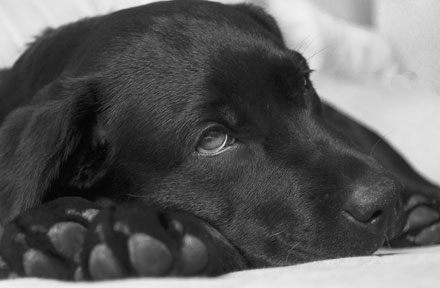
What to Feed a Sick Dog With No Appetite? [2025 Guide]
May 16, 2023
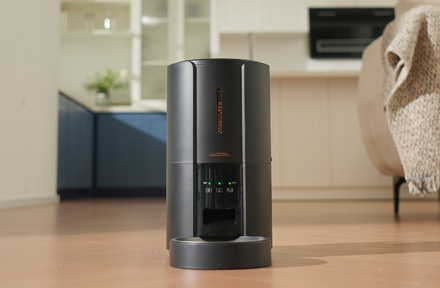
Troubleshooting Common Issues with Automatic Pet Feeders: Tips & Tricks for Pet Owners
Oct 26, 2023
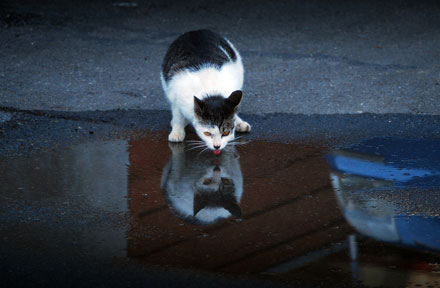
Why Does My Cat Cough After Drinking Water? 8 Potential Reasons
Mar 13, 2023
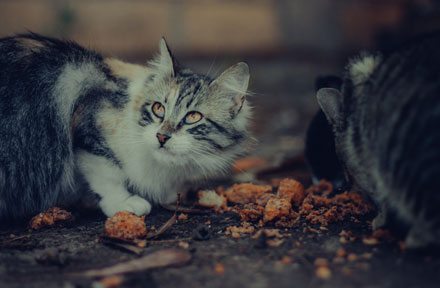
My Cat Only Eats A Little at A Time - What to Do?
Feb 27, 2023
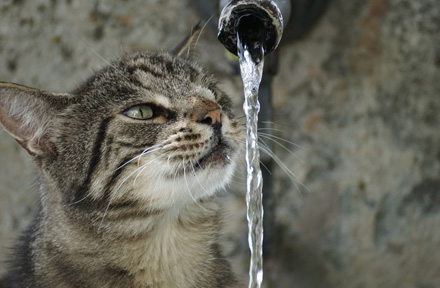
Why is My Cat Throwing up Water? Top 5 Causes Here
Feb 08, 2023
$99.99
$129.99
Copyright © 2025 WOPET. All Rights Reserved.